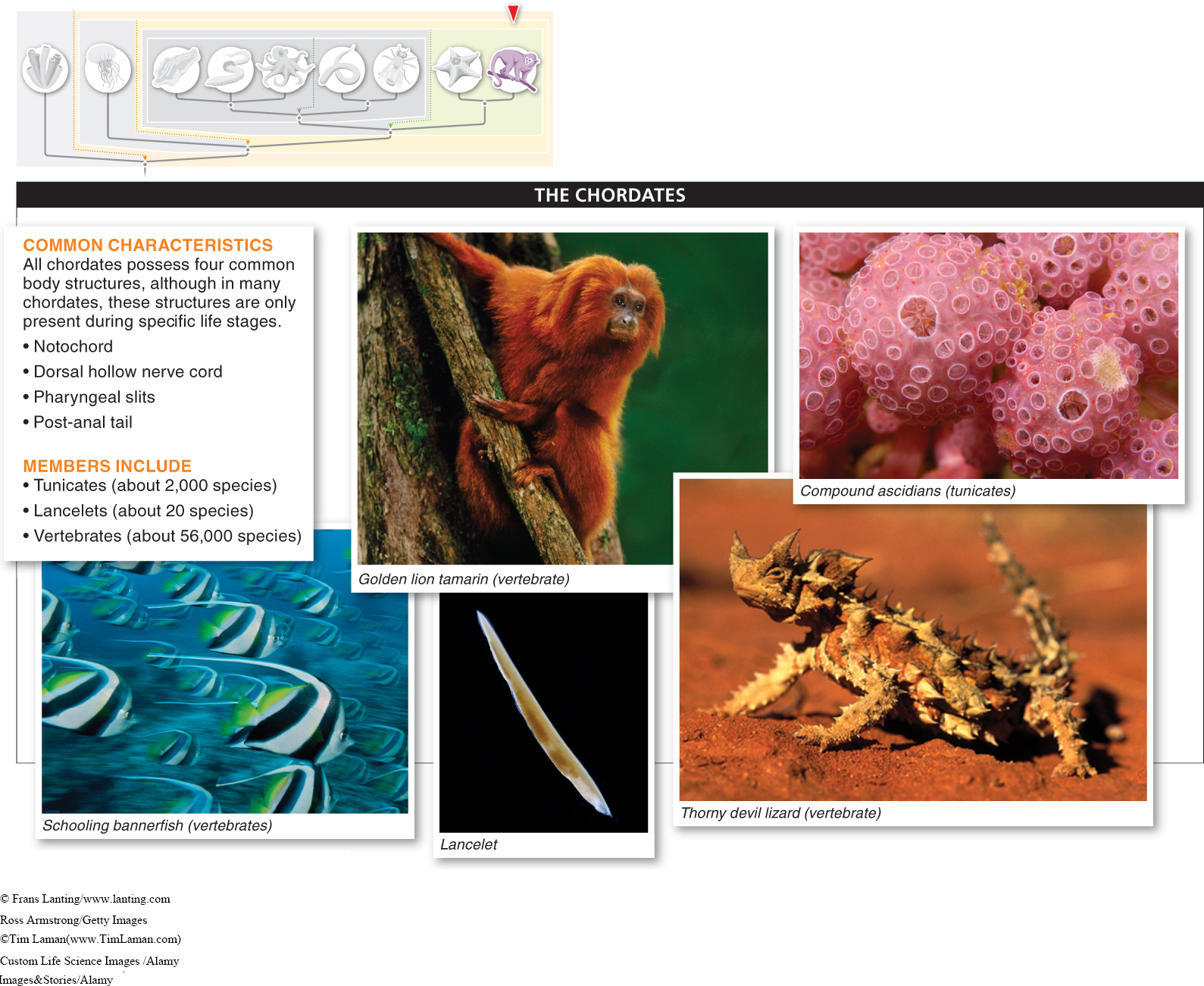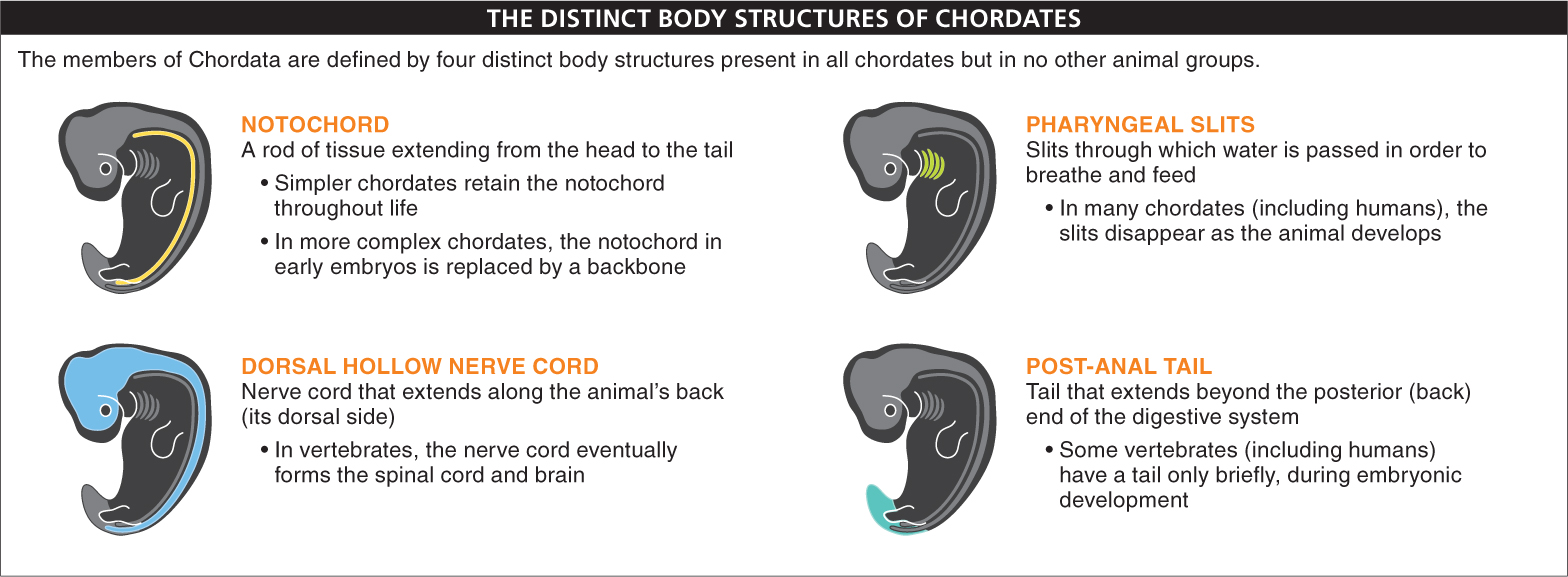11.13–11.15: The phylum Chordata includes vertebrates, animals with a backbone.

Vertebrates are deuterostome animals, having defined tissues and bilateral symmetry. Vertebrates are part of a phylum called Chordata (the chordates) that includes three major groups in total; the two other groups are the tunicates and the lancelets (FIGURE 11-20). For at least a portion of their life cycle, members of all three of the major groups of chordates possess four distinct chordate body structures that are found in no other animal groups (FIGURE 11-21).


- 1. The notochord, a rod of tissue extending from head to tail, is the structure that gives chordates their name (from the Latin for “cord”). The notochord stiffens the body when muscles contract during movement. The simplest chordates—
those most distantly related to the vertebrates— retain the notochord throughout life. In the more complex chordates such as vertebrates, however, the notochord is present only in the early embryo and is replaced by the backbone (vertebral column) as the embryo develops. - 2. A dorsal hollow nerve cord extends along the animal’s back (its dorsal side) from its head to its tail. In vertebrates, this nerve cord eventually forms the central nervous system, which consists of the spinal cord and the brain. Other kinds of animals (worms, insects, and so on) also have a nerve cord, but it lies in the lower portion of the front (ventral) part of the body and is solid instead of hollow.
- 3. Pharyngeal slits are present in the embryos of all chordates, but in many chordates (including humans) the slits disappear as the animal develops. The earliest chordates were aquatic, and to breathe and feed they passed water through slits in the pharyngeal region (the area between the back of the mouth and the top of the throat). In humans, pharyngeal slits are present only in the embryo; our gills were lost far back in evolutionary time.
- 4. A post-
anal tail is another chordate characteristic. The posterior (back) end of the digestive system is the anus. The region of the body extending beyond the opening of the anus is referred to as “post- anal.” All vertebrates have a tail in this location, but some, including humans, have a tail only for a brief period, during embryonic development.
Although all chordates share these four characteristic structures, the chordates exhibit tremendous physical and ecological diversity.
Tunicates (Urochordata; about 2,000 species) are invertebrate marine animals that have defined tissues, bilateral symmetry, and deuterostome development, in which the gut develops from back to front. The adults are about the size of your thumb and look like balls of brownish green jelly. You can find them attached to docks and the mooring lines of boats. It is the free-
471
472

Lancelets (Cephalochordata; about 20 species), also bilaterally symmetrical deuterostomes, are slender, eel-
Vertebrates (Vertebrata; about 56,000 species) are the most diverse group of chordates (FIGURE 11-22). Because they are deuterostomes, they are bilaterally symmetrical, with defined tissue and from-
- They have a backbone, formed when a column made from hollow bones (or cartilage in some organisms), called vertebrae, forms around the notochord. This backbone surrounds and protects the dorsal hollow nerve cord.
- They have a head, at the front (anterior) end of the organism, containing a skull, a brain, and sensory organs.
The size range of vertebrates is huge. The smallest is a frog species from New Guinea that is just over a quarter-
TAKE-HOME MESSAGE 11.13
All chordates have four characteristic structures: a notochord, a dorsal hollow nerve cord, pharyngeal slits, and a post-
Which four distinct body structures define vertebrates?
473